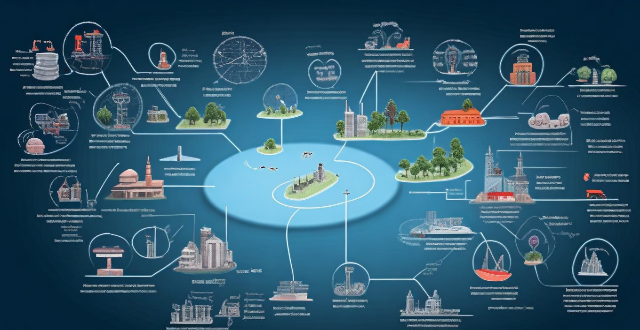This article explores potential solutions for climate change in agriculture, including sustainable farming practices, water management, crop diversification and rotation, livestock management, energy efficiency and renewable energy, carbon offsetting and sequestration, research and development, and policy interventions. These solutions aim to mitigate the impacts of climate change on crop yields, water availability, and biodiversity, and help build a more resilient and sustainable agricultural sector capable of adapting to changing climate conditions.

Potential Solutions for Climate Change in Agriculture
Climate change poses significant challenges to the agricultural sector, affecting crop yields, water availability, and biodiversity. To mitigate these impacts, various solutions can be implemented at different levels, from farm management practices to policy interventions. This article explores some of the potential solutions that can help address climate change in agriculture.
1. Sustainable Farming Practices
a. Conservation tillage:
Conservation tillage involves minimal soil disturbance during planting, which helps reduce erosion and improve soil health. This practice also sequesters carbon in the soil, acting as a natural carbon sink.
b. Cover cropping:
Planting cover crops between cash crop seasons helps protect soil from erosion, suppress weeds, and fix nitrogen in the soil. Cover crops also contribute to carbon sequestration by adding organic matter to the soil.
c. Integrated nutrient management:
This approach combines organic and inorganic sources of nutrients to optimize crop growth while minimizing environmental harm. It includes using compost, manure, and other organic materials alongside synthetic fertilizers.
2. Water Management
a. Dripper irrigation:
This method delivers water directly to the root zone of plants, reducing water loss due to evaporation and runoff. Dripper irrigation increases water use efficiency and reduces the risk of waterlogging and related plant diseases.
b. Rainwater harvesting:
Collecting rainwater for later use in irrigation can help farmers cope with changing precipitation patterns and reduce their dependence on groundwater resources.
c. Flood-resistant crops:
Planting flood-tolerant varieties can help farmers adapt to increased rainfall events and minimize crop losses due to flooding.
3. Crop Diversification and Rotation
a. Diversification:
Growing a variety of crops instead of monocultures can help reduce pest pressure and increase resilience against weather extremes. It also promotes biodiversity and ecosystem stability.
b. Rotation:
Rotating crops seasonally or annually can disrupt pest cycles, improve soil health, and enhance nutrient cycling within the system.
4. Livestock Management
a. Improved feed efficiency:
Optimizing livestock diets to reduce methane emissions and improve nutrient utilization can help decrease the environmental impact of livestock production.
b. Manure management:
Properly managing manure through composting or anaerobic digestion can reduce greenhouse gas emissions and create valuable fertilizer products for crops.
5. Energy Efficiency and Renewable Energy
a. Energy-efficient equipment:
Using energy-efficient machinery and technologies in farming operations can significantly reduce fossil fuel consumption and associated emissions.
b. Renewable energy sources:
Harnessing solar, wind, or biogas energy for farm power needs not only reduces reliance on fossil fuels but also provides a stable source of income for farmers through government incentives or selling excess electricity back to the grid.
6. Carbon Offsetting and Sequestration
a. Agroforestry:
Incorporating trees into farming systems through agroforestry practices can provide additional income streams for farmers, enhance biodiversity, and act as carbon sinks.
b. Wetland restoration:
Restoring wetlands helps regulate water flow, filter pollutants, and sequester carbon, making them essential components of climate change mitigation strategies in agriculture.
7. Research and Development
a. Breeding programs:
Investing in breeding programs focused on developing drought-resistant, heat-tolerant, and disease-resistant crop varieties is crucial for adapting to changing climate conditions.
b. Precision agriculture technology:
Adopting precision agriculture technologies such as satellite imagery, sensors, and data analytics can optimize input use (like fertilizers and water), leading to more efficient resource management and reduced environmental impact.
8. Policy Interventions
a. Carbon pricing:
Implementing carbon pricing mechanisms encourages farmers to adopt practices that reduce greenhouse gas emissions by providing financial incentives for carbon sequestration activities like tree planting or improved soil management.
b. Subsidies reform:
Reforming agricultural subsidies to support sustainable farming practices rather than intensive production methods can help shift the sector towards more climate-friendly approaches.
c. Research funding:
Increased investment in research focused on sustainable agriculture and climate change adaptation can lead to innovative solutions and best practices that benefit both farmers and the environment.
In conclusion, addressing climate change in agriculture requires a multifaceted approach encompassing sustainable farming practices, water management strategies, crop diversification, livestock management improvements, energy efficiency measures, carbon offsetting efforts, research and development initiatives, and supportive policy frameworks. By implementing these solutions at local, national, and international levels, we can work towards building a more resilient and sustainable agricultural sector capable of adapting to the challenges posed by climate change.